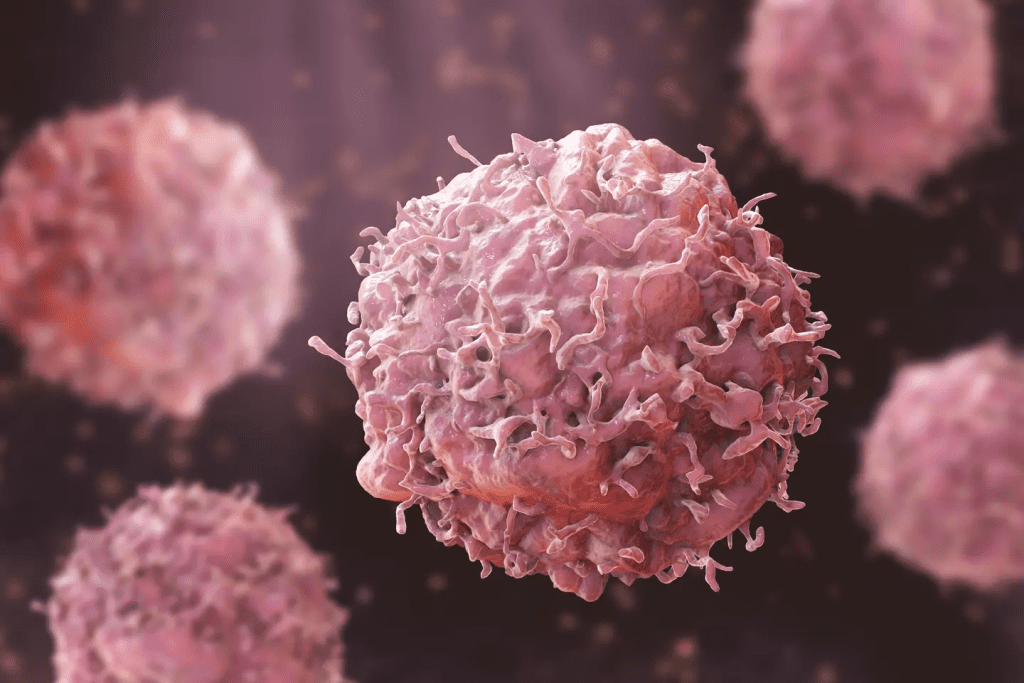Cancer treatment has always been a difficult journey, with many patients having to endure harsh therapies like chemotherapy and radiation. These treatments, while effective in some cases, often come with severe side effects and can lead to resistance over time. But what if we could change the nature of the cancer cells themselves, transforming them into normal, non-cancerous cells? This groundbreaking new technology, which enables researchers to convert cancer cells into normal cells, is offering a new hope for patients and represents a major leap forward in cancer research.
What is Cancer Reversion?

Cancer reversion refers to the process of converting cancer cells back into normal cells, effectively reversing the malignancy. While this concept has been around for some time, recent advancements in science have brought it closer to reality. Instead of relying on treatments that kill cancer cells, which can have toxic effects on the body, this approach aims to “reprogram” the cancer cells, turning them back into their original, healthy forms. This could potentially eliminate the need for traditional treatments that often cause side effects like nausea, hair loss, and weakened immune systems.
How Does the New Technology Work?
Professor Kwang-Hyun Cho from KAIST (Korea Advanced Institute of Science and Technology) explains the exciting breakthrough: “The idea that some cancer cells can be induced to resemble normal cells is a fascinating area of study, with potential therapeutic implications.” Researchers have discovered that certain types of cancer cells can be manipulated using specific methods to revert to their non-cancerous state. This process involves targeting the specific pathways within the cell that are responsible for maintaining its abnormal characteristics.
Video : New Cancer Cure | Can Cancer Be Treated With No Side-Effects? Korean Academy Develops New Treatment
At the heart of this discovery is a set of molecular signals that can encourage the cancer cells to differentiate into normal-like cells. These signals essentially “reprogram” the cells, directing them to behave like healthy, non-cancerous cells rather than proliferating uncontrollably. This innovative technique has the potential to greatly reduce the malignancy of cancer without the need to destroy the cells entirely.
The Promise of Less Toxicity and Fewer Side Effects
One of the main concerns with traditional cancer treatments is the toxicity that comes with them. Chemotherapy and radiation, while effective at killing cancer cells, also destroy healthy cells in the process, leading to a host of unwanted side effects. With this new technology, the idea is to minimize the collateral damage caused by traditional treatments. Instead of using toxic drugs or radiation to kill cancer cells, this approach would work by modifying the cells at a molecular level, potentially reducing the overall impact on the body.
This revolutionary technique could also reduce the long-term side effects that many cancer patients experience, such as cognitive decline, infertility, and cardiovascular problems. If the cancer cells can be turned back into normal cells without the use of toxic treatments, patients may experience a better quality of life during and after treatment.
How It Compares to Traditional Cancer Treatments

Traditional cancer treatments, such as chemotherapy, radiation, and immunotherapy, work by either killing cancer cells directly or stimulating the immune system to fight the disease. While these treatments can be effective, they often come with significant drawbacks. Chemotherapy, for example, is known for its wide range of side effects, including fatigue, nausea, and hair loss. Radiation can also damage healthy tissues, leading to long-term complications.
The new technology offers a different approach by addressing the cancer cells themselves, rather than relying on external treatments to kill or shrink tumors. By converting cancer cells into normal cells, the risk of recurrence and resistance is potentially minimized, as the cancer cells no longer exist in their malignant form.
Addressing Cancer Resistance with Reversion Technology
One of the most significant challenges in cancer treatment is the development of resistance. Over time, cancer cells can become resistant to chemotherapy, rendering the treatment less effective. This resistance occurs because cancer cells can adapt and evolve, finding ways to survive and continue growing despite the treatment.
The new technology of cancer reversion could help address this issue. Since the cancer cells are being converted into normal cells rather than being killed, the chance of developing resistance is significantly reduced. This is because the cells are no longer behaving as cancerous entities; instead, they are returning to their original, healthy state. This could offer a more sustainable and long-term solution to treating cancer.
The Future of Cancer Treatment

While this breakthrough is still in the early stages, the potential for cancer reversion technology is immense. It opens up new possibilities for how we can approach cancer treatment, moving away from the toxic side effects of traditional therapies and focusing instead on restoring normal cell function. This could lead to more targeted, efficient, and less invasive treatments that improve patient outcomes and reduce the physical and emotional toll of cancer treatment.
Researchers are already exploring ways to further refine the technology, making it more effective for a wider range of cancers. As the science behind cancer reversion continues to evolve, we may one day see this approach become a standard part of cancer treatment regimens.
Challenges and Limitations
Despite its promise, cancer reversion technology is not without its challenges. For one, not all types of cancer cells may be susceptible to reversion, and it may take time for researchers to identify which cancers can be treated using this method. Additionally, the process of reprogramming cancer cells is complex, and further research is needed to determine the safest and most effective ways to implement it.
Moreover, while reversion offers a potential solution to the side effects of traditional cancer treatments, it is still unclear how long the effects will last and whether the cells will remain in their normal state indefinitely. There may also be concerns regarding the long-term impact of reprogramming cells in this way, which will require careful monitoring and study.
Video : Scientists Develop Revolutionary Technology to Transform Cancer Cells Back to Normal
Conclusion: A New Era for Cancer Treatment
The development of technology that can convert cancer cells into normal cells represents a groundbreaking advancement in cancer research. By focusing on reprogramming the cells themselves rather than relying on traditional methods like chemotherapy and radiation, this approach promises to reduce side effects, improve patient outcomes, and potentially minimize the risk of resistance. As research continues to evolve, cancer reversion may become a key player in the fight against cancer, offering a more sustainable and effective way to treat the disease.
This exciting breakthrough brings new hope to millions of cancer patients around the world and marks the beginning of a new era in cancer treatment.


